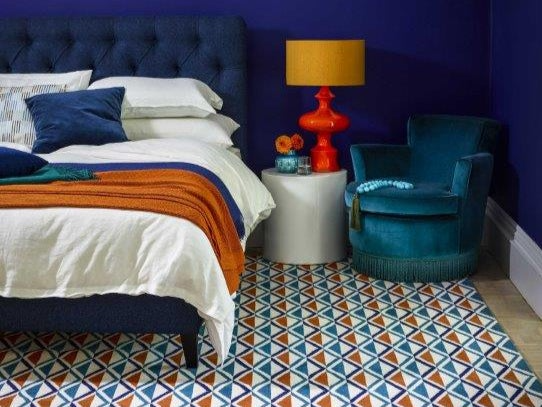When planning a room renovation, it’s easy to dive straight into paint colours, fabric swatches or statement furniture. Yet the surface that anchors everything is the floor, and it quietly dictates how successful a makeover truly feels.
Flooring is more than a backdrop. It sets the mood, influences flow, and provides the foundation on which every other design choice sits.
By starting with the floor, you can ensure cohesion, save on costly redesign mistakes, and avoid the frustration of trying to make wall colours or furnishings work with a base that was chosen as an afterthought.
Flooring as a Visual Anchor
Every room has a natural focal point, but it’s the flooring that establishes continuity and balance. Light-toned wood can make a compact room feel airy, while rich walnut or herringbone parquet lends depth and sophistication. A patterned tile in a hallway creates impact the moment someone steps inside, while soft carpet in a bedroom instantly signals comfort.
Because the eye reads the floor as the largest uninterrupted surface, it sets the stage for how the rest of the space is interpreted. Choosing it first allows wall colours, textiles, and even lighting to harmonise around it, instead of competing. Flooring even influences how a room flows into the next, helping open-plan homes or adjoining spaces feel connected rather than disjointed.
Creating Atmosphere
Texture plays as vital a role as colour. A sleek, polished concrete floor lends itself to contemporary, minimalist schemes, while rustic, reclaimed oak feels earthy and grounded. Even the simplest laminate or vinyl can mimic natural grain, bringing warmth where coldness might otherwise dominate.
Flooring also affects how a space feels underfoot, which has a surprising impact on atmosphere. A cool stone kitchen floor brings freshness in summer, while a thick carpet under bare feet encourages a sense of comfort in winter. Deep navy walls may overwhelm when paired with dark wood, but they can sing against pale oak. Conversely, a neutral sofa becomes striking when set against a dramatic slate floor. Every shade and surface has an emotional pull, shaping how a room is experienced.
Practical Considerations
Starting with flooring also allows for practical decision-making early on. A family home with pets may call for durable luxury vinyl or engineered wood flooring, while a serene study could benefit from the plush quiet of carpet. Underfloor heating compatibility, slip resistance, and sustainability credentials all shape what’s realistic long before the décor is layered in.
Maintenance is another factor to consider. While a glossy tile might look stunning, it can easily prove frustrating if it shows every footprint in a busy household. In contrast, textured wood or patterned finishes can disguise daily wear more effectively. Replacing flooring after everything else has been chosen is costly and disruptive, after all. But by addressing it first, homeowners future-proof their design choices, ensuring longevity without constant compromise.
How Flooring Influences Style Choices
Flooring decisions often hint at the personality of a room. Where Scandinavian-inspired interiors rarely stray far from pale timber, industrial lofts tend to favour raw concrete or weathered boards. Once the foundation is clear, accent choices become far easier: linen upholstery with soft greys for Nordic calm or leather armchairs and exposed metal for an urban edge.
Even smaller accents like rugs, side tables, or statement lighting feel more natural when responding to the tone beneath them. A Persian rug glows against dark wood, while a geometric flatweave can add rhythm and energy to plain tiles. The floor creates the rhythm of a room, guiding how patterns and textures are layered above. Getting this decision right means each accessory, fabric, or paint shade has a clearer role to play, creating a space that feels intentional instead of one that seems to be pieced together without much thought.
The Foundation of Style
Flooring doesn’t need to demand attention, but it should always be chosen with care as it sets the palette, atmosphere, and functionality for everything layered upon it. Choosing it at the beginning brings clarity to every other design decision, prevents costly mistakes, and ensures the finished room feels cohesive and lasting. Once the right flooring is in place, the rest of the design can be built around it with confidence.
